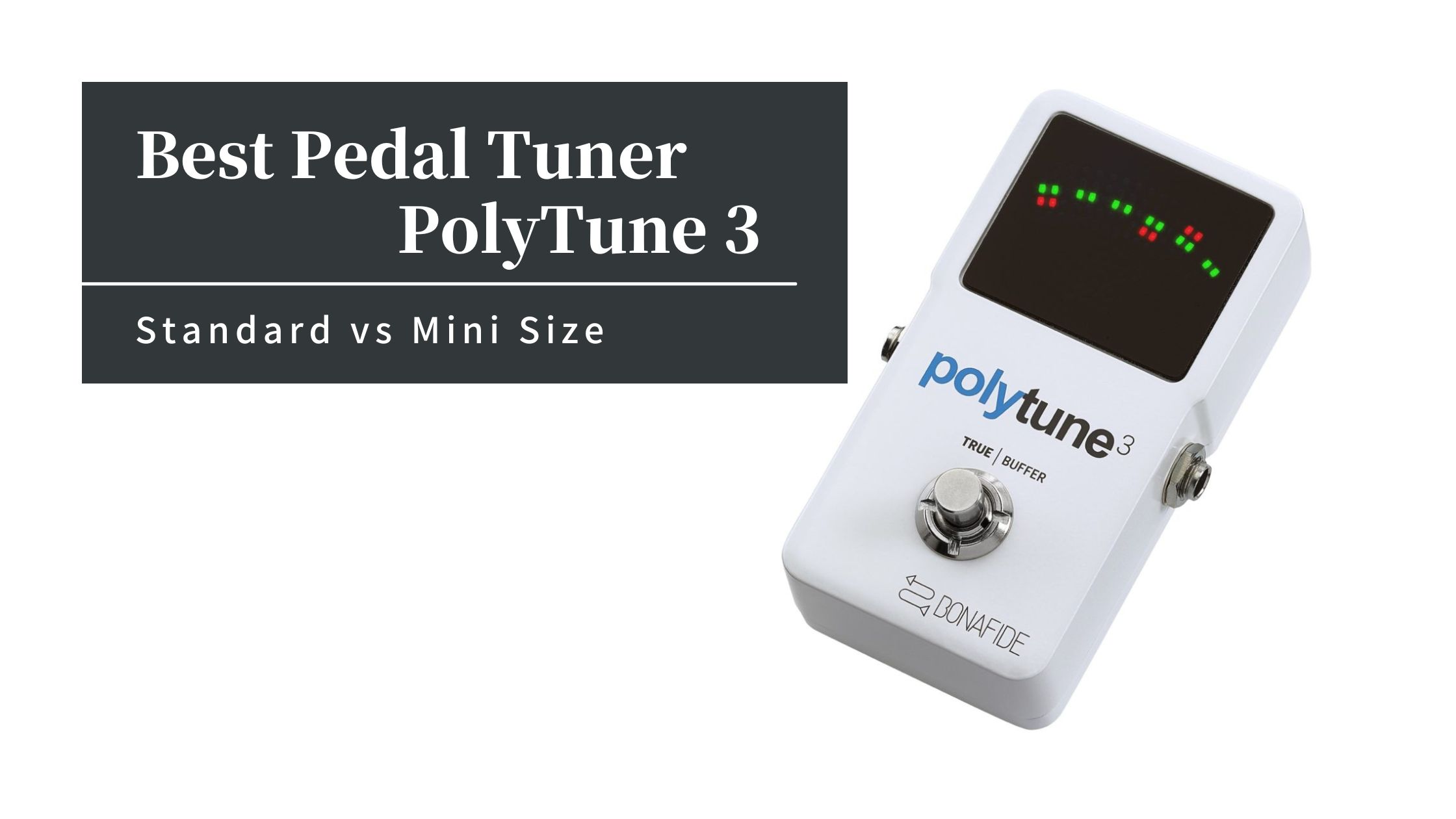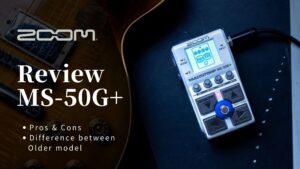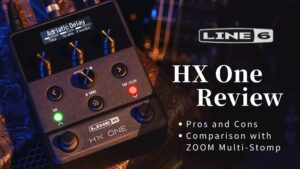PolyTune 3 is the most recommended pedal tuner. Polyphonic tuning for quick tuning when used on stage. Ultra-precise strobe tuning is also available for recording. The display is easy to read in the dark and outdoors. High-performance buffer as well.
For those who:
● Are looking for the most recommended pedal tuner.
● Want to tune in quickly in a short amount of time.
● Desire a high-precision tuner suitable for recording.
● Want a 2-in-1 tuner and buffer to save space on the board.
● Are searching for a tuner that’s easy to see outdoors
I’m an ex-musical instrument store clerk, Yosh (@Yosh_Guitar), reviews the pedal tuner TC Electronic PolyTune 3, which he highly recommends. I also explain the differences between the regular and mini sizes.
Pros of PolyTune 3
A polyphonic tuner that allows for quick tuning in a short amount of time.
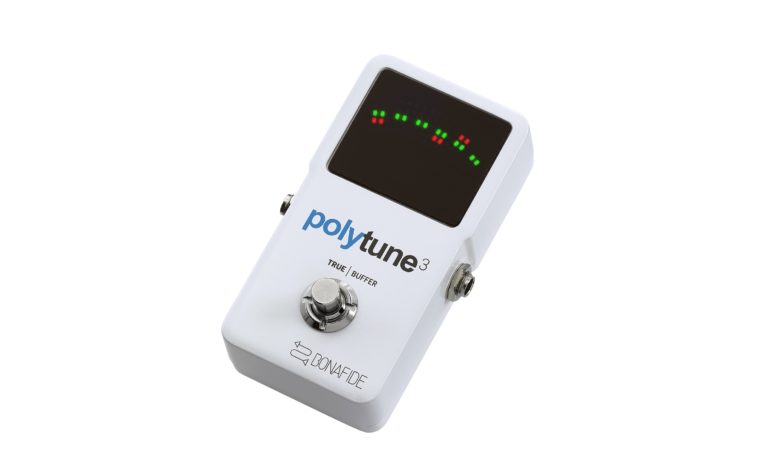
The original PolyTune was the world’s first product to display all strings on a meter when multiple strings were played simultaneously. This feature continues in the third generation. It’s especially useful for quick tuning during live performances. It’s compatible with guitars and, by pressing a button on the top side of the device, bass guitars. The bass mode supports 5-string basses.
Automatic switching between monophonic and polyphonic tuners
The tuner automatically switches displays based on the number of strings played. It accurately captures low sounds, which cheaper tuners might miss, such as those from down-tuned guitars, 7-string guitars, or 5-string basses. The display response time is top-notch. For monophonic tuning, you can choose between the standard needle mode and the ultra-precise strobe mode.
Ultra-precise ±0.02 cent strobe mode suitable for recording
A cent represents 1/100th of a semitone. In strobe mode, this tuner boasts an accuracy equivalent to the highly precise Sonic Research tuner, with an error margin of just ±0.02 cents. This level of precision is suitable for recording. However, for live performances where quick tuning is essential, the needle mode might be more practical.
The built-in high-performance buffer enhances the guitar’s character
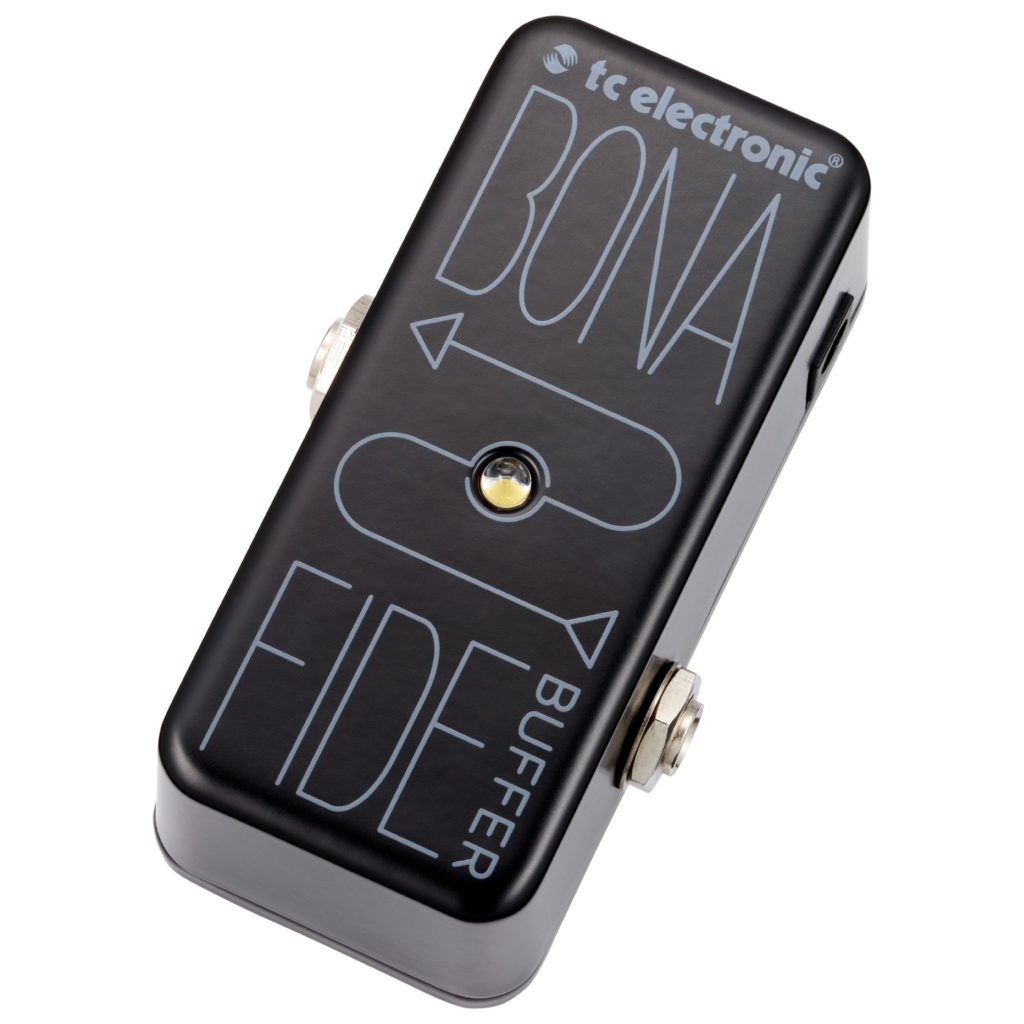
PolyTune 3 incorporates TC Electronic’s high-quality analog buffer, BonaFide Buffer. Purchased separately, this buffer costs $69. It’s known for minimal sound quality alteration, neither cutting highs excessively nor boosting them, and it operates with very low noise. The tuner allows users to switch between true bypass and buffered bypass, showcasing its user-friendly design.
A display that’s easy to see, whether on a dark stage or in bright outdoor settings
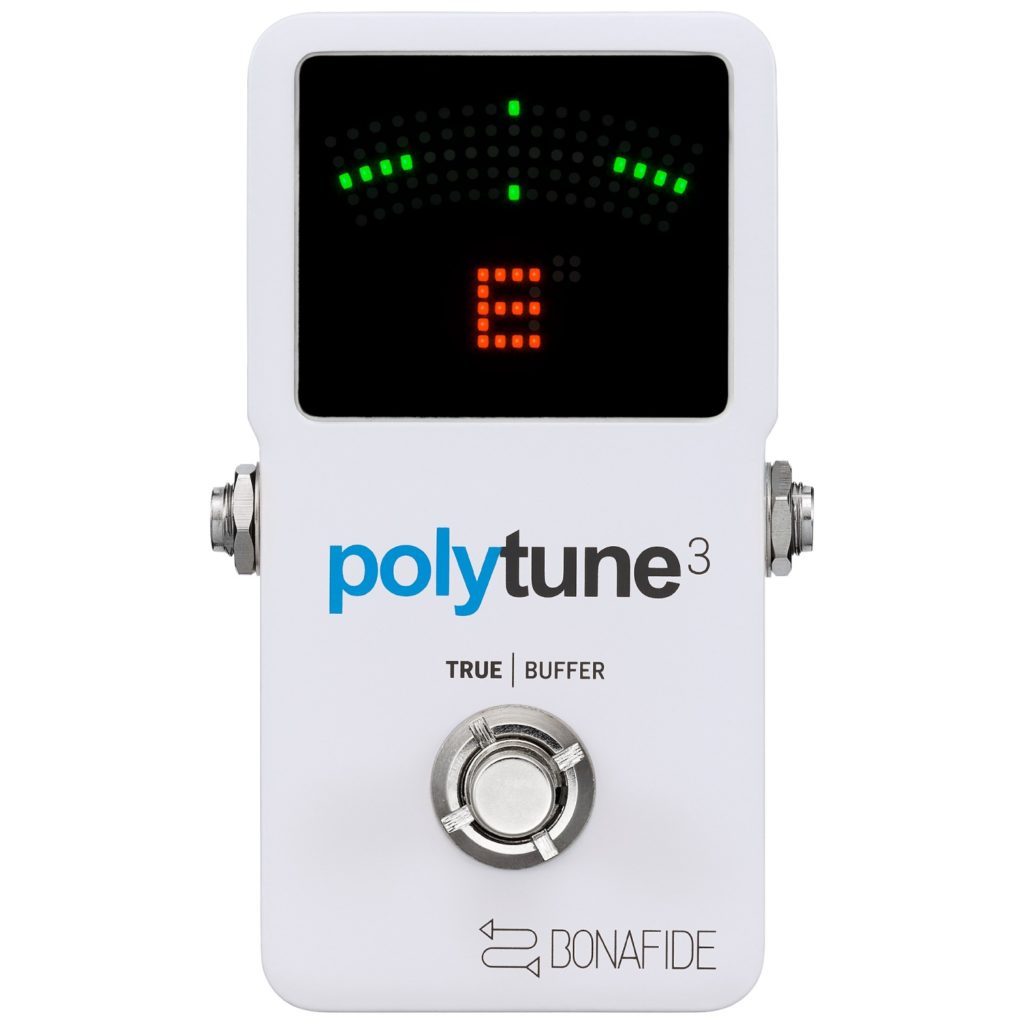
Thanks to its display incorporating 109 high-luminance LEDs, visibility is excellent. The display changes from red to green when tuning is accurate, making it easy to understand. An integrated sensor adjusts display brightness based on the environment, increasing brightness outdoors and reducing it in darker settings to conserve battery life.
Cons of PolyTune 3
Too Many Features for Beginners
The PolyTune 3, with its advanced features and precision, is favored by many professional musicians. However, its multi-functionality can be a disadvantage for beginners. In environments like studios where other instruments are playing, the guitar may resonate, and even if only one string is played, the tuner might automatically switch to the mode that tunes multiple strings. The ultra-precise strobe mode can also be challenging for beginners to understand.
Not compatible with multi-string guitars
Unfortunately, it does not support 7-string or 8-string guitars. However, given that the ultra-low strings tend to have unstable pitches, it’s essential to tune the 7th and 8th strings monophonically. So, this might not be an issue for many.
Differences between PolyTune 3 and PolyTune 3 Mini

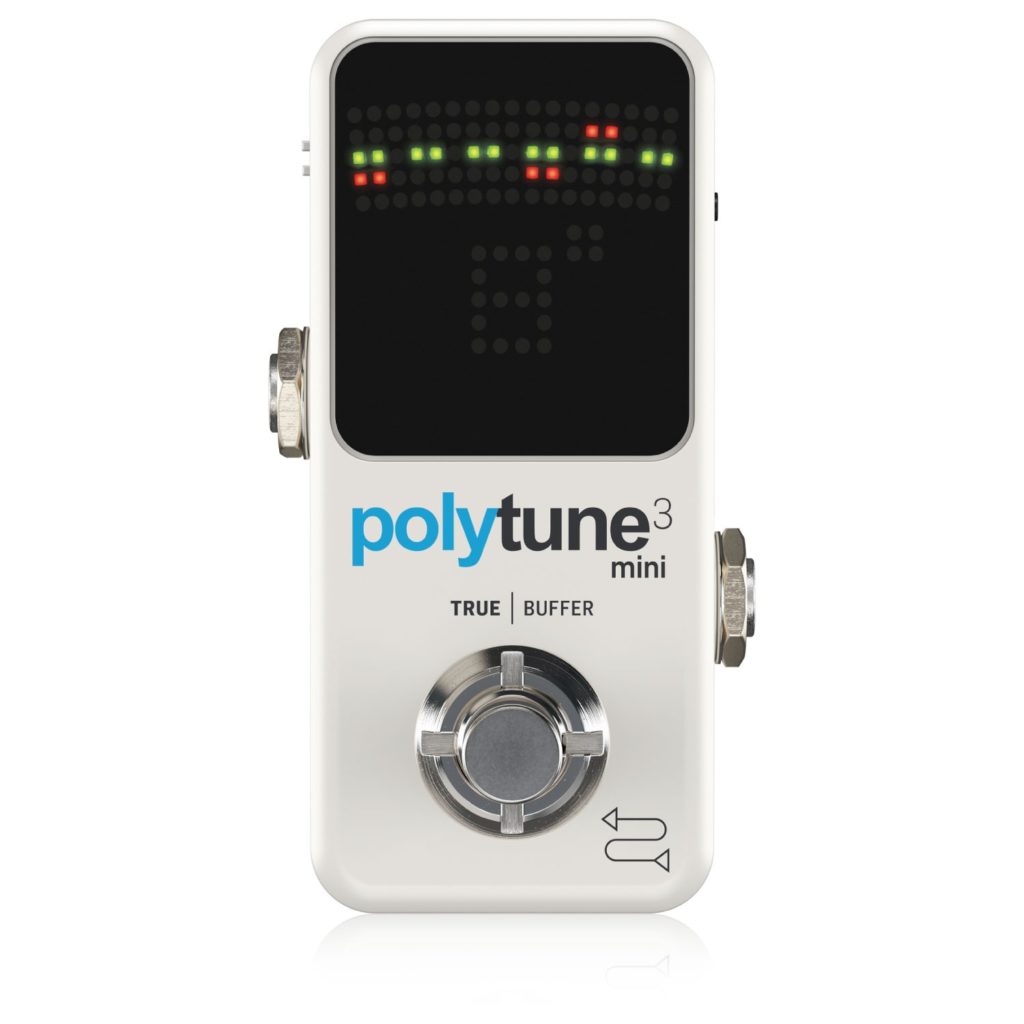
The PolyTune 3 has a smaller counterpart, the Mini. The differences aren’t just in size, so if you need certain features, you might prefer the regular size.
| Feature | Polytune 3 | Polytune 3 Mini |
|---|---|---|
| Market Price | $99 | $99 |
| Color | White | White or Black |
| Calibration (A) | 435~445 Hz | 440 Hz |
| Battery Operated | Yes | No |
| 9V Power Output | Available | Not Available |
| USB Port | Available | Not Available |
| Size | 72 x 122 x 50 mm | 51 x 93 x 45 mm |
Calibration allows you to adjust the pitch of the note A. While 440Hz is standard for bands, 442Hz is popular for pianos and wind instruments. Jazz musicians might prefer the regular size. The 9V power output on the regular size allows you to power another effect pedal when using a 9V adapter. The USB port might be used for firmware updates in the future. The Mini also comes in a black variant called Noir. The Mini’s display is smaller. Given that the prices are the same, unless you’re trying to save space on your effect board, the regular size might be a better choice.
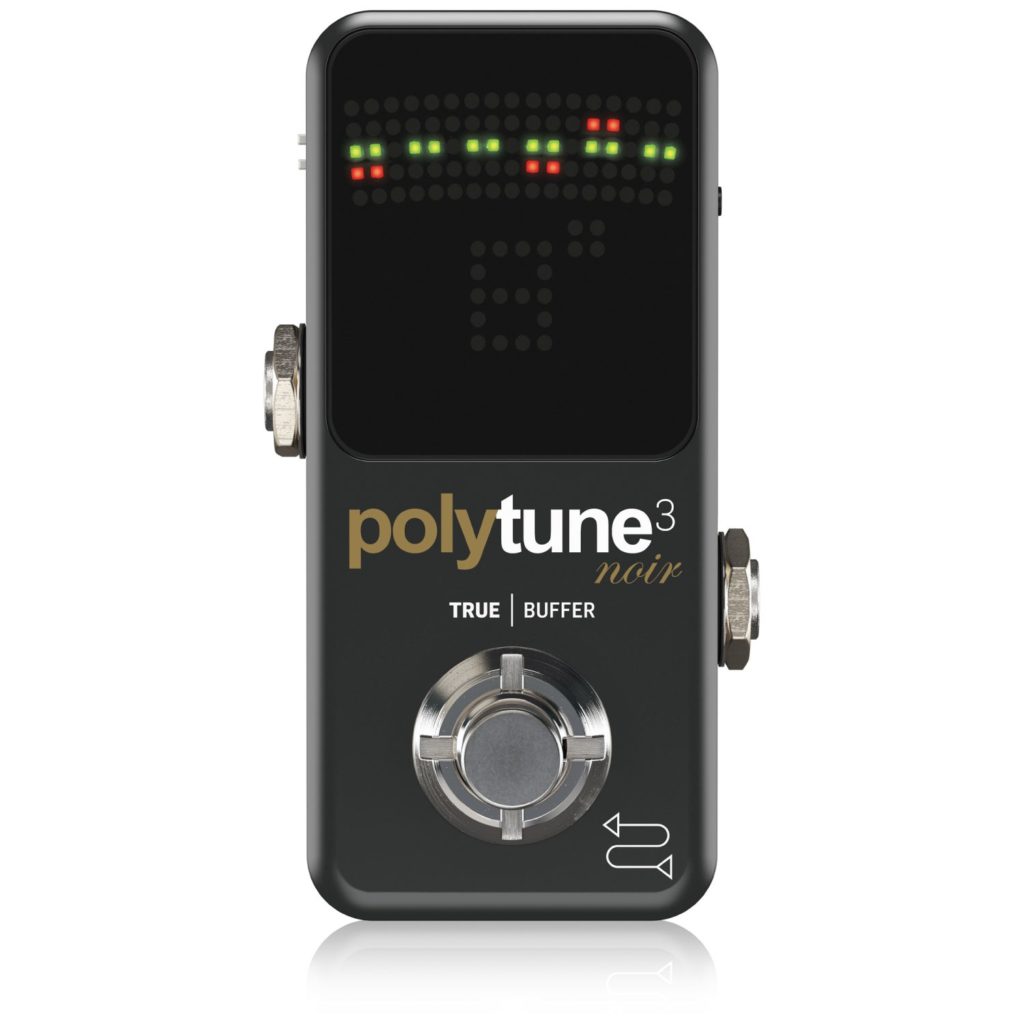
PolyTune 3 is recommended for those who:
- Are unsure which pedal tuner to choose.
- Want a tuner with a clear display.
- Need calibration for sessions with wind or keyboard instruments.
- Want to operate on 9V battery.
PolyTune 3 MINI is recommended for those who:
- Prefer a smaller tuner but don’t want to compromise on accuracy.

